Wake County Justice Center- a LEED Silver Project done right!
October 01, 2014 —
Melissa Dewey Brumback – Construction Law in North CarolinaYesterday evening, I had the privilege of attending the Triangle USGBC’s “Talk & Walk” at the Wake County Justice Center. The 576,996 square foot Justice Center was completed 6 months early and over 30 million under budget. (The final cost, including soft costs, came in at ~$141,000,000). Now that’s what I call a LEED project done right!
Interestingly, the County did not endeavor for a LEED Silver rating– the plan was to aim for a Certification. However, as the process unfolded, the Team kept meeting the goals and points for a Silver certification without any appreciable additional costs.
The end result? An “iconic but energy efficient building,” according to Tim Ashby, current Wake County Facilities Project Manager. Tim was initially involved in the Project while working at O’Brien Atkins, which served as the architecture firm for the Project under the direction of Architect Andrew Zwiacher.
Read the court decisionRead the full story...Reprinted courtesy of
Melissa Dewey Brumback, Construction Law in North CarolinaMs. Brumback may be contacted at
mbrumback@rl-law.com
EPA Can't Evade Enviro Firm's $2.7M Cleanup Site Pay Claim, US Court Says
January 25, 2021 —
Mary B. Powers - Engineering News-RecordA Richmond, Va., federal appeals court has restored an environmental consultant's legal fight for $2.7 million in federal funds to cover work at a Superfund cleanup site it managed, rejecting a lower court’s dismissal of its claim over a technicality.
Reprinted courtesy of
Mary B. Powers, Engineering News-Record
ENR may be contacted at ENR.com@bnpmedia.com
Read the full story... Read the court decisionRead the full story...Reprinted courtesy of
Recent Florida Legislative Changes Shorten Both Statute of Limitation ("SOL") and Statute of Repose ("SOR") for Construction Defect Claims
March 19, 2024 —
Holly A. Rice - Saxe Doernberger & Vita, P.C.The Florida Legislature and Governor DeSantis passed Senate Bill 360, effective April 13, 2023, which imposes significant changes to Florida’s statute of limitation (“SOL”) and statute of repose (“SOR”) periods prescribed in Florida Statute § 95.11. In short, the SOL and SOR periods will commence earlier and run earlier, which in effect shortens the time to bring a construction defect claim on both ends of the timeline.1
These changes will have positive impacts for general contractors who may save on insurance premiums with shorter completed operations tails. In other words, the timeframe within which contractors are at risk of being sued for construction-related errors is significantly reduced under the new version of the statute. Owners and developers, on the other hand, may feel that the increased pressure of uncovered construction defects necessitates the filing of lawsuits sooner than they might have otherwise filed. Collectively, all parties involved will certainly have to consider when and how to place their carriers on notice of claims or potential claims and, coupled with Florida’s sweeping changes to fee shifting statutes, insured parties may see more coverage denials which, in turn, could lead to more coverage actions.2
Read the court decisionRead the full story...Reprinted courtesy of
Holly A. Rice, Saxe Doernberger & Vita, P.C.Ms. Rice may be contacted at
HRice@sdvlaw.com
Colorado’s New Construction Defect Law Takes Effect in September: What You Need to Know
November 21, 2017 —
Jesse Witt - The Witt Law FirmOriginally published by CDJ on September 7, 2017
Colorado’s new construction defect law officially takes effect this month. Although HB 17-1279 was passed in May, the statutory text provides that it only applies “with respect to events and circumstances occurring on or after September 1, 2017.” With that date now upon us, practitioners should be mindful of the law’s new requirements.
The law applies to any lawsuit wherein a homeowner association files a construction defect action on behalf of two or more of its members. “Construction defect action” is defined broadly to include any claims against construction professionals relating to deficiencies in design or construction of real property. Before an association may commence such an action, its board must follow several steps.
First, the board must deliver notice of the potential construction defect action to all homeowners and the affected construction professionals at their last known addresses. This requirement does not apply to construction professionals identified after the notice has been mailed, or to construction professionals joined in a previously-approved lawsuit. The notice must include a description of the alleged construction defects with reasonable specificity, the relief sought, a good-faith estimate of the benefits and risks involved, and a list of mandatory disclosures concerning assessments, attorney fees, and the marketability of units affected by construction defects. The notice must also call a meeting of all homeowners. The notice should be sent to the construction professionals at least five days before the homeowners.
Reprinted courtesy of
Jesse Howard Witt, Acerbic Witt
Mr. Witt may be contacted at www.witt.law
Read the full story... Read the court decisionRead the full story...Reprinted courtesy of
20 Years of BHA at West Coast Casualty's CD Seminar: Chronicling BHA's Innovative Exhibits
May 03, 2018 —
Beverley BevenFlorez-CDJ STAFFThe Bert L. Howe & Associates, Inc., (BHA) exhibit has been a fixture at West Coast Casualty's Construction Defect Seminar since the mid-1990's. Through the years, BHA has updated their display, but no matter what year, you could count on the BHA exhibit to provide a not-to-be-missed experience.
2008-BHA's sleek, rear projection display includes a screen that promotes the firm's capabilities that can be seen throughout the exhibit hall. This would be one of many innovations BHA has brought to the West Coast Casualty seminar.
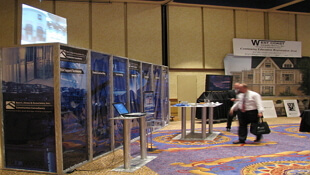
2009-With the success of the rear screen projection, BHA adds additional monitors to provide attendees with more information about BHA.
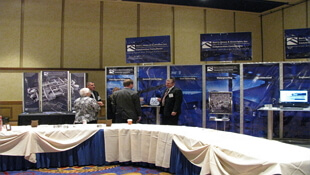
2010-BHA adds an interpretive professional development exhibit targeted to Building Envelope issues allowing adjusters and other non-construction professionals hands on access to the systems and components at the heart of many related such claims.


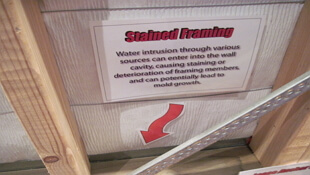
2011-BHA's Swing for Charity challenge is born.

2012-Always innovating, BHA expands its rear projection and professional development offerings to West Coast attendees.

2013-BHA showcases additional capabilities with a twenty-four foot, custom, convex, immersive video experience.

2014-BHA adds an iPhone display to give a hands-on demonstration of their data collection methods.
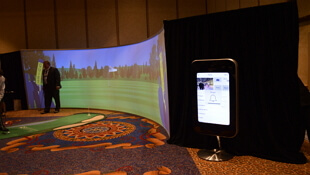
2015-BHA's twenty-four foot , custom, convex, immersive video experience was elevated with two additional rear projection screens, reflecting BHA's newest capabilities and services.

2016-BHA dazzles attendees with their new exhibit comprised of more than 15 integrated, high definition, LCD displays. iPads are stationed on tables to conveniently demonstrate BHA's data collection processes.
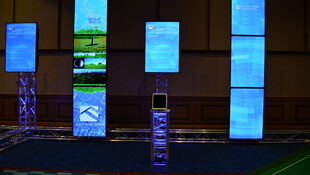
2017-BHA's Swing for Charity Golf Challenge raised $2,225.00 for the National Coalition for Homeless Veterans and $1,900 for Final Salute.
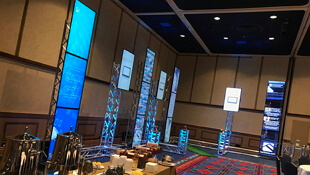
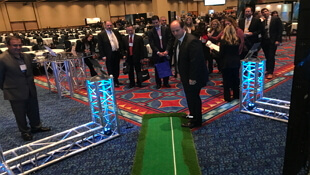
Read the court decisionRead the full story...Reprinted courtesy of
Noteworthy Construction Defect Cases for 1st Qtr 2014
April 30, 2014 —
Beverley BevenFlorez-CDJ STAFFJohn A. Husmann and Jocelyn F. Cornbleet of BatesCareyLLP analyzed several noteworthy construction defect cases that have already occurred in 2014, as published in Law360. The cases involved “the ‘occurrence’ requirement, contractual liability exclusion and ‘other insurance’ clauses.” Husmann and Cornbleet summarized Owners Insurance Co. v Jim Carr Homebuilder LLC (Alabama), Pennsylvania National Mutual Casualty Insurance Co. v. Snider (also Alabama), Woodward LLC v. Acceptance Indemnification Insurance Co. (Mississippi), and others.
Read the court decisionRead the full story...Reprinted courtesy of
California Homeowners Can Release Future, Unknown Claims Against Builders
June 10, 2015 —
Edward A. Jaeger, Jr. and William L. Doerler – White and Williams LLPIn Belasco v. Wells, 183 Cal. Rptr.3d 840, 234 Cal. App. 4th 409 (2015), the California Court of Appeals for the Second District addressed the question of whether a homeowner, when settling an administrative complaint against a licensed homebuilder, can release future, unknown claims. Despite the presence of a California statute, Cal. Civ. Code § 1542, stating that a general release does not extend to claims that the releasor does not know about, the court held that the homeowner’s express release of future claims was enforceable. Thus, the homeowner’s release - signed as part of a 2006 settlement of the homeowner’s construction defect claims against the defendant, a homebuilder - barred the homeowner’s 2012 claims against the builder based on latent defects in the roof of the home that the homeowner discovered in 2011.
Background
The plaintiff, David Belasco, a patent attorney, bought a newly-constructed home from the defendant-builder, Gary Wells, in 2004. Wells holds a Class B General Building Contractor license issued by the Contractors State License Board (the Board). In 2006, Belasco filed a complaint against Wells with the Board based on alleged construction defects in the home.
As a result of Belasco’s complaint to the Board, the parties engaged in arbitration. At the arbitration, both parties were represented by counsel. Wells offered to settle the dispute for the sum of $25,000 and Belasco accepted Wells’ offer.
Reprinted courtesy of
Edward A. Jaeger, Jr., White and Williams LLP and
William L. Doerler, White and Williams LLP
Mr. Jaeger may be contacted at jaegere@whiteandwilliams.com; Mr. Doerler may be contacted at doerlerw@whiteandwilliams.com
Read the court decisionRead the full story...Reprinted courtesy of
Construction Defect Claim Did Not Harm Homeowner, Court Rules
September 30, 2011 —
CDJ STAFFThe Minnesota Court of Appeals has ruled in Creswell v. Estate of Howe, a case in which a woman bought a home and then sued the seller’s estate, both sets of real estate agents, and the homeowner’s association over construction defects. A district court ruled against her, granting summary judgment to the other parties.
After buying a townhome “as is,” Catherine Creswell claims to have shared a thought with her agent that the homeowners association was, in the words of her agent, “trying to hide something.” Later, Creswell found that a few days before her closing, the board had discussed problems with “roofs, siding and soundproofing of the townhomes.” The court noted that “it was clear from the documents that appellant [Creswell] received that the association had known about various construction defects for many years, some of which affected [her] unit.”
Creswell initially sued the estate, the man who negotiated the sale for his mother’s estate, the real estate companies and the agents involved, the homeowners association, and four board members. Later she sued for punitive damages, dropped a claim for interference with contractual relations, and dismissed her claims against the individual board members. The court dismissed all of Creswell’s claims awarding costs to those she sued.
The appeals court has affirmed the decision of lower court, noting that Creswell “did not provide us with any argument why the district court erred in dismissing her unjust-enrichment, breach of contract, or rescission claims against the various respondents.” Nor did she provide evidence to support her claims of “breach of duty, fraud, and violation of consumer protection statutes.”
The court noted that Creswell could not sue the homeowners association over the construction defects because she “failed to prove that she was damaged by the association’s nondisclosure.” The court noted that “there are no damages in this case,” as Creswell “was never assessed for any repairs, she had not paid anything out-of-pocket for repairs, and she has presented no evidence that the value of her individual unit has declined because of the alleged undisclosed construction defects.”
The court granted the other parties motion to dismiss and denied Creswell’s motion to supplement the record. Costs were awarded to the respondents.
Read the court’s decision…
Read the court decisionRead the full story...Reprinted courtesy of




































































